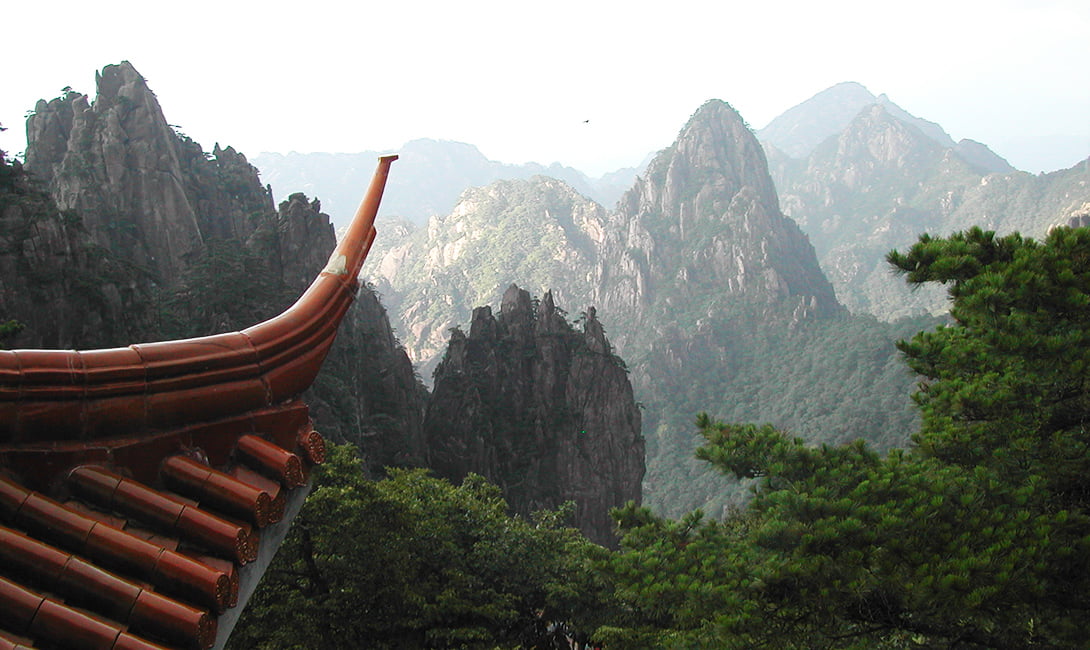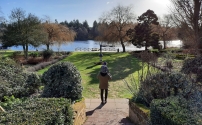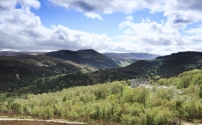14812
TotalViews
With its sharp granite peaks often shrouded in mist, tall pine trees and low-lying clouds, the otherworldly Huangshan scenic area in eastern China has been inspiring artists and writers for generations. It’s the subject of many of China’s most famous scroll paintings, and features many times in Chinese literature – Lonely Planet estimates that it was the subject of at least 20,000 poems during the Qing dynasty alone.
Translating as Yellow Mountain in English, and a namesake of the legendary Yellow Emperor (Huang Di) in 747 AD, Huangshan is in China’s Anhui province and has been a Unesco World Heritage site since 1990 for its scenery and wildlife. It looks beautifully Zen in its promotional pictures, and remains an inspirational place to visit, most especially off season, early in the morning for sunrise views of the mountains, and for its hiking trails and interesting set of pavilions and temples.
Contemporary artists and poets might find it difficult to find the tranquility their predecessors once did, however, especially during peak holiday periods and weekends, for the area draws over three million visitors each year. Between 2011-2015, the total number of visitors reached 14.65 million. Though authorities cap visitor numbers to 50,000 visitors per day, many travellers feel that this is still far too high to secure high standards of comfort, safety and enjoyment of the area and to protect the area in the name of sustainable tourism.
It’s not that China hasn’t been managing Huangshan to try to make it a more sustainable tourism destination. To help protect the area’s rare species such as lions, and to allow soil and forest to recover and grow, for example, Huangshan has been working on a closure rotation system for its most frequently visited scenic spots since 1989. An effective practice recommended by UNESCO, this entails the closure of popular areas such as Lion Peak from three to five years.

In addition, 6 billion yuan (the equivalent of nearly 955 million US dollars) has been invested over the last five years in transport, information systems and sanitation, and this investment will continue and increase year on year. Winter tours are promoted to try to balance tourism numbers throughout the four seasons, and to help protect the environment and resources, 10 clear routes are tailored and promoted for domestic and foreign tourists, from an experiential tour of ‘perfect’ countryside and a photography tour of picturesque villages to a quality tour of Hui Culture and a world classic heritage tour of Mt. Huangshan itself.
Perhaps most importantly, local communities in the surrounding five towns benefit from Huangshan’s economic development. They work in resources protection, forest fire prevention, monitoring, patrolling, and planning, and are informed and consulted on major decision-making as well.
All these efforts are to be applauded. In 2000 Huangshan was selected as a United Nations World Tourism Organization (UNWTO) Sustainable Tourism Observatory, one of the only 21 locations worldwide that are committed to regular and timely measurement of tourism at destination level, and in 2017, the area became the first Chinese National Park to achieve EarthCheck Silver Certification as a sustainable destination.
But there’s still a long way to go. Such certification doesn’t measure overtourism, and many travellers and travel agents still feel that numbers need to be far more restricted, and more resources given, to ensure the area is a magical place to visit now and for future generations.
As with many popular tourist destinations all over the world that are suffering from overtourism, the main issue seems to be continued overcrowding, especially during peak periods. Numbers need to be capped more strictly, there needs to be improved sanitation facilities and more restaurants that cater to international travellers, single-use plastics need to be banned, and account needs to be taken of safety among large numbers – there are a lot of very steep steps on the mountain, for example, which can feel dangerous and stressful to walk on in a crowd. We as travellers can help by asking the right questions – read the NOW guide to Overtourism.






 A Rewilding Awakening at Fritton Lake
A Rewilding Awakening at Fritton Lake Why I Love Alladale
Why I Love Alladale 5 Ethical Travel Start Ups to Support in 2020
5 Ethical Travel Start Ups to Support in 2020 Where to Travel in 2020 and Why?
Where to Travel in 2020 and Why?